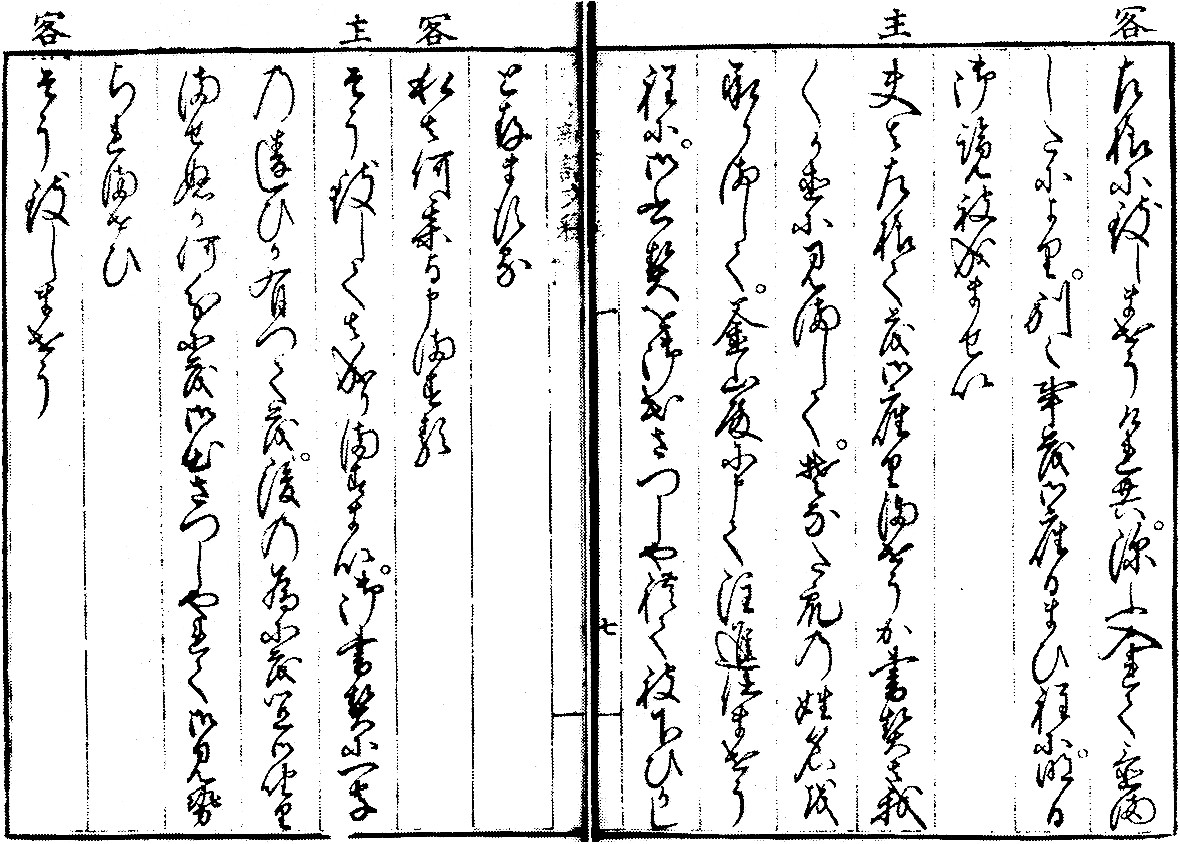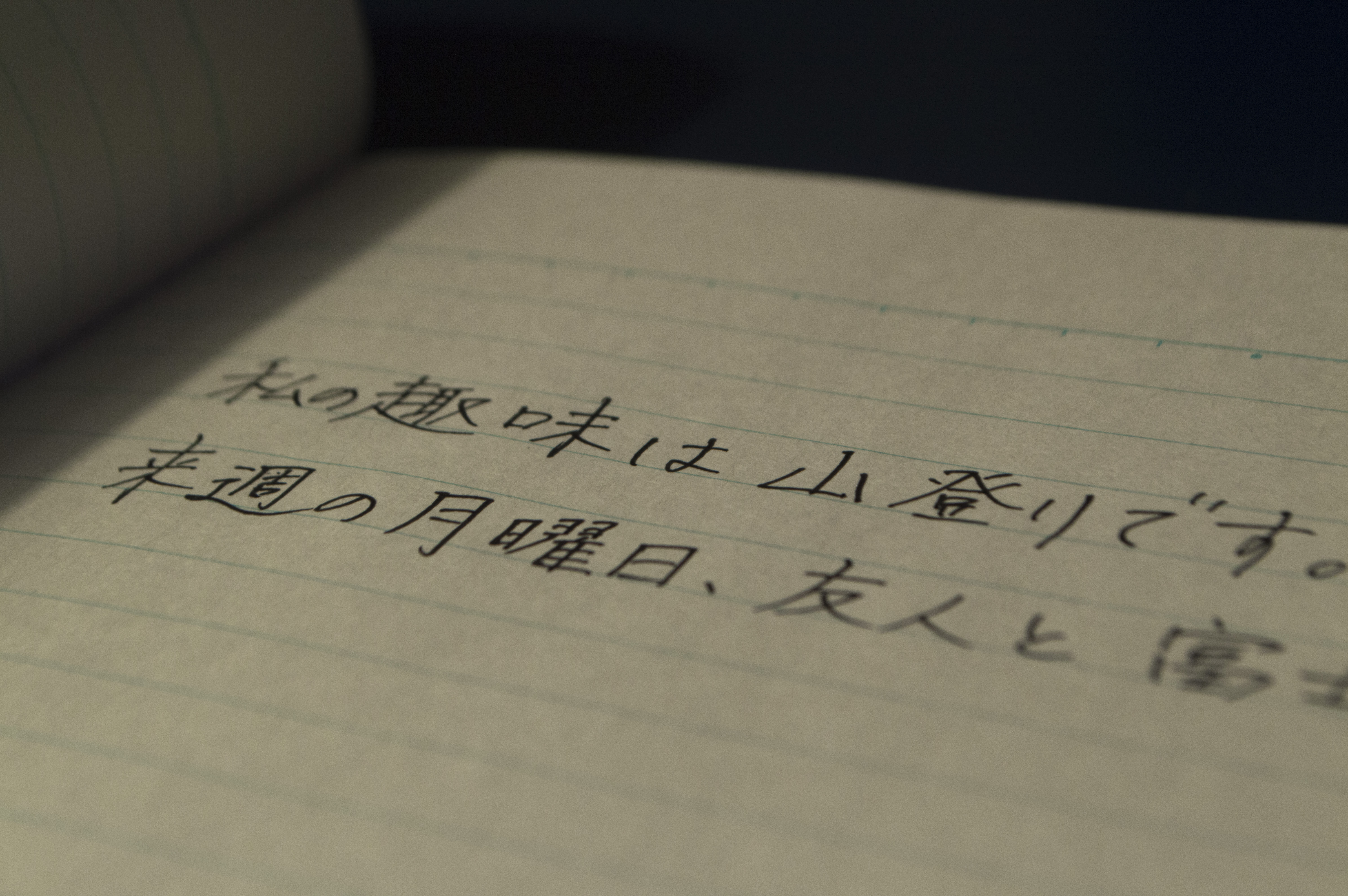|
Ch'ŏphae Sinŏ
''Ch'ŏphae Sinŏ'' () or is a Korean textbook of colloquial Japanese, written in 1618 and published by the Bureau of Interpreters in 1676. It is a source for Late Middle Japanese. Author Kang U-sŏng (, ) was a native of Jinju. At the age of 11, he was one of thousands of Korean civilians abducted to Japan during the Japanese invasion of Korea in 1592. He was released after 10 years and returned to Korea, where he embarked on a career as an official interpreter, passing the interpreter's exam in 1609. He served as interpreter on Korean embassies to Japan and as an instructor in Busan, the point of departure for missions to Japan. By 1618, he had completed a series of instructional materials on the Japanese language in the form of conversations involving Koreans travelling to Japan for business or diplomacy. Editions The work was published in 10 fascicles in 1676, when it was adopted as the official textbook for teaching Japanese, replacing 14 out-dated titles. The Japanes ... [...More Info...] [...Related Items...] OR: [Wikipedia] [Google] [Baidu] |
Japanese Language
is the principal language of the Japonic languages, Japonic language family spoken by the Japanese people. It has around 123 million speakers, primarily in Japan, the only country where it is the national language, and within the Japanese diaspora worldwide. The Japonic family also includes the Ryukyuan languages and the variously classified Hachijō language. There have been many Classification of the Japonic languages, attempts to group the Japonic languages with other families such as Ainu languages, Ainu, Austronesian languages, Austronesian, Koreanic languages, Koreanic, and the now discredited Altaic languages, Altaic, but none of these proposals have gained any widespread acceptance. Little is known of the language's prehistory, or when it first appeared in Japan. Chinese documents from the 3rd century AD recorded a few Japanese words, but substantial Old Japanese texts did not appear until the 8th century. From the Heian period (794–1185), extensive waves of Sino-Ja ... [...More Info...] [...Related Items...] OR: [Wikipedia] [Google] [Baidu] |
Seoul National University
Seoul National University (SNU; ) is a public university, public research university in Seoul, South Korea. It is one of the SKY (universities), SKY universities and a part of the Flagship Korean National Universities. The university's main campus is located in Gwanak District, Gwanak, and two additional campuses are located in Daehangno and Pyeongchang County, Pyeongchang. The university comprises sixteen colleges, one graduate school and nine professional schools. The student body consists of nearly 17,000 undergraduate and 11,000 graduate students. History Pre-establishment Seoul National University (SNU) originates from various educational institutions established by Gojong of Korea, King Gojong of the Joseon, Joseon dynasty. Several of them were integrated into various colleges when SNU was founded later. To modernize the country, Gojong initiated the establishment of modern higher education institutions. By means of the issue of a royal order, the law academy ' has been ... [...More Info...] [...Related Items...] OR: [Wikipedia] [Google] [Baidu] |
Late Middle Japanese Texts
Late or LATE may refer to: Everyday usage * Tardy, or late, not being on time * Late (or the late) may refer to a person who is dead Music * ''Late'' (The 77s album), 2000 * Late (Alvin Batiste album), 1993 * Late!, a pseudonym used by Dave Grohl on his '' Pocketwatch'' album * Late (rapper), an underground rapper from Wolverhampton * "Late", a song by Kanye West from ''Late Registration'' Other uses * Late (Tonga), an uninhabited volcanic island southwest of Vavau in the kingdom of Tonga * "Late" (''The Handmaid's Tale''), a television episode * LaTe, Oy Laivateollisuus Ab, a defunct shipbuilding company * Limbic-predominant age-related TDP-43 encephalopathy, a proposed form of dementia * Local-authority trading enterprise, a New Zealand business law * Local average treatment effect, a concept in econometrics * Late, a synonym for ''cooler'' in stellar classification See also * * * ''Lates'', a genus of fish in the lates perch family * Later (other) Later may refe ... [...More Info...] [...Related Items...] OR: [Wikipedia] [Google] [Baidu] |
Works By Joseon People
Works may refer to: People * Caddy Works (1896–1982), American college sports coach * John D. Works (1847–1928), California senator and judge * Samuel Works (c. 1781–1868), New York politician Albums * ''Works'' (Pink Floyd album), a Pink Floyd album from 1983 * ''Works'', a Gary Burton album from 1972 * ''Works'', a Status Quo album from 1983 * ''Works'', a John Abercrombie album from 1991 * ''Works'', a Pat Metheny album from 1994 * ''Works'', an Alan Parson Project album from 2002 * ''Works Volume 1'', a 1977 Emerson, Lake & Palmer album * ''Works Volume 2'', a 1977 Emerson, Lake & Palmer album * '' The Works'', a 1984 Queen album Other uses *Good works, a topic in Christian theology * Microsoft Works, a collection of office productivity programs created by Microsoft * IBM Works, an office suite for the IBM OS/2 operating system * Mount Works, Victoria Land, Antarctica See also * The Works (other) * Work (other) Work may refer to: * Work ( ... [...More Info...] [...Related Items...] OR: [Wikipedia] [Google] [Baidu] |
University Of Tokyo
The University of Tokyo (, abbreviated as in Japanese and UTokyo in English) is a public research university in Bunkyō, Tokyo, Japan. Founded in 1877 as the nation's first modern university by the merger of several pre-westernisation era institutions, its direct precursors include the '' Tenmongata'', founded in 1684, and the Shōheizaka Institute. Although established under its current name, the university was renamed in 1886 and was further retitled to distinguish it from other Imperial Universities established later. It served under this name until the official dissolution of the Empire of Japan in 1947, when it reverted to its original name. Today, the university consists of 10 faculties, 15 graduate schools, and 11 affiliated research institutes. As of 2023, it has a total of 13,974 undergraduate students and 14,258 graduate students. The majority of the university's educational and research facilities are concentrated within its three main Tokyo campuses: Hongō, ... [...More Info...] [...Related Items...] OR: [Wikipedia] [Google] [Baidu] |
Academy Of Korean Studies
The Academy of Korean Studies (AKS; ) is a South Korean research and educational institute focusing on Korean studies. It was established on June 22, 1978, by the Ministry of Education & Science Technology. Works Journals *'' Korea Journal'' *''Review of Korean Studies'' *''Korean Studies Quarterly'' The following journals are not published by the AKS, but are often incorrectly assumed to be: *'' Korean Studies'', Hawaii *'' The Journal of Korean Studies'', Seattle *'' Encyclopedia of Korean Culture'' *'' Acta Koreana'' See also * List of national universities in South Korea * List of universities and colleges in South Korea * Education in Korea References External links * * Introducing research institutesat the Korean History On-line (한국역사정보통합시스템) (archived) Bundang 1978 establishments in South Korea Universities and colleges in Gyeonggi Province Research institutes in South Korea Social science research institutes Educational instit ... [...More Info...] [...Related Items...] OR: [Wikipedia] [Google] [Baidu] |
Japanese Mixed Script
The modern Japanese writing system uses a combination of logographic kanji, which are adopted Chinese characters, and syllabic kana. Kana itself consists of a pair of syllabaries: hiragana, used primarily for native or naturalized Japanese words and grammatical elements; and katakana, used primarily for foreign words and names, loanwords, onomatopoeia, scientific names, and sometimes for emphasis. Almost all written Japanese sentences contain a mixture of kanji and kana. Because of this mixture of scripts, in addition to a large inventory of kanji characters, the Japanese writing system is considered to be one of the most complicated currently in use. Several thousand kanji characters are in regular use, which mostly originate from traditional Chinese characters. Others made in Japan are referred to as "Japanese kanji" (), also known as " urcountry's kanji" (). Each character has an intrinsic meaning (or range of meanings), and most have more than one pronunciation, the choice ... [...More Info...] [...Related Items...] OR: [Wikipedia] [Google] [Baidu] |


